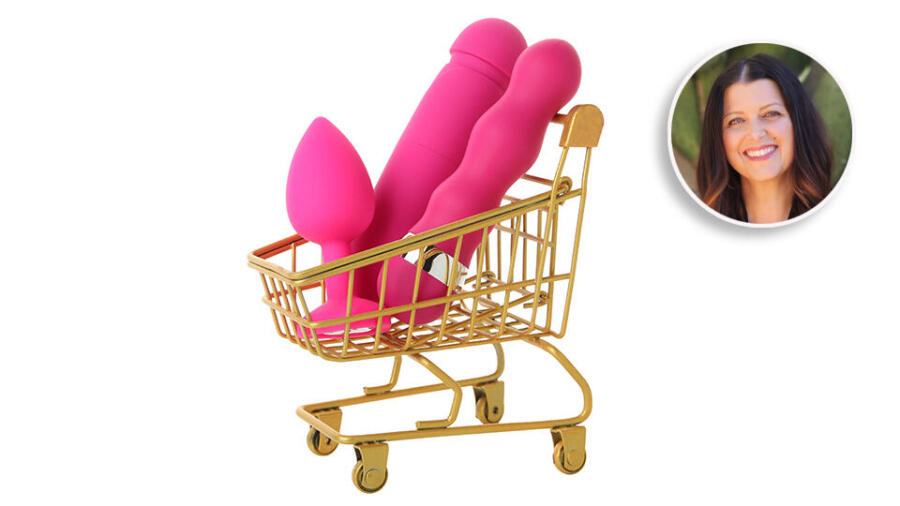During my first year in the industry, the luxury vibrator on shelves was LELO’s Gigi, priced at $109. It was made with high-quality silicone, boasted an ergonomic design, a travel lock and a warranty. Soon after, Je Joue released its first product, SaSi, which employed “rolling ball” movements to simulate oral sex. It looked like an oversized phone from the ’90s, but the sensations were unique and met the needs of a niche group of clitoral stimulation lovers who did not love vibration. Within a year, We-Vibe hit the market with the first C-shaped couples’ toy, which was met with wide acclaim from sex toy aficionados and newbies looking to close the orgasm gap, as well as business insiders. It was a golden age of sex toy innovation. There were still so many customer needs that the toy market had not quite caught up with, technologically speaking.
Today, we are in a very different market — one that may actually be asking us to slow down on innovation and focus more on brand and sex toy awareness, product accessibility, and tried-and-tested products that customers can trust.
Today, we are in a very different market — one that may actually be asking us to slow down on innovation and focus more on brand and sex toy awareness, product accessibility, and tried-and-tested products that customers can trust.
Having worked for brick-and-mortar and online retailers for much of my career, I certainly understand the appeal of new releases. A new release warrants premier placement and gives you an opportunity to engage all communication channels and partners. However, new releases also risk oversaturating the category unnecessarily. As we face a potential recession, innovation for innovation’s sake, stocking every color and bringing a variety of new releases seasonally will likely not be winning strategies.
How do we get our bearings in this new situation? First, get clear on your criteria for strategically expanding your selection. Setting the parameters for product selection expansion now will serve you well down the line as consumer confidence fluctuates and business requires you to be as deliberate as you can be with your inventory.
From a product innovation and development standpoint, new releases will slow in the coming year. However, a new release that improves upon your premier product, meets a broad customer or price point demand, or fulfills a pleasure need for your niche target audience will continue to make sense to develop and bring to market. From a stocking and inventory standpoint, a new release that fills a price-point gap or replaces a comparable strong seller, rounds out a category that your target customers are looking for, or is an easy add-on sale to a bestseller can still make for a great new addition to your selection.
In my recent experience working with Magic Wand — arguably the most judicious product developer in the industry, with only six unique models after 56 years — there is a lot you can do with your existing selection without taking on unnecessary SKUs or inventory.
Start by identifying your unique selling proposition (USP): the core offering of your product selection, whom you sell it to and why people shop your selection rather than your competitors’. Once you have identified what sets you apart — whether it’s price, selection, quality, experience or something else — return to your USP relentlessly when making decisions about your offerings.
When the focus is on new products, which for many years it has been industrywide, it is natural to shift your attention away from the tried-and-true classics that either sell themselves or at least grab customer attention without much effort. By contrast, now is a time to give your bestsellers and classics a glow-up. Even if product development and innovation continue to be a core value for your business, revisiting your selection with fresh eyes can only benefit your business.
Some questions to consider: What do your bestsellers have in common? What needs do they fill, and what benefits do they offer your customers? What is their story? Build your narrative about these products — catalogue the various ways they can be used, who uses them, the problems they help solve, their unique USPs and how they fit into the larger conversations about pleasure, sex, intimacy and self-care. Once you refamiliarize yourself with your classics and their benefits, boost them through your existing channels and find the appropriate new audiences, just as if you were promoting a new product.
When there is uncertainty in the market, novelty does not resonate in the same way that it does during more stable times. Price consideration increases, appetite to try new things can decrease, and generally people want proof that their money is going to something dependable that will deliver.
The good news: We have benefited from an incredible amount of sex toy innovation over the last 20 years. Our products and technologies have been tested and proven to benefit our customers’ lives. Now is a time to turn attention to, build awareness of and generate demand for trusted products.
Sarah Tomchesson (she/her) has spent much of her career as a brand strategist shaping legendary pleasure brands, including her current role as the marketing director for Magic Wand. She is a certified sexuality educator and intimacy coach and co-hosts a weekly podcast, “F*ck Yeah.” Tomchesson also serves as vice chair of the board of directors of SIECUS — Sex Ed for Social Change, the nation’s leading organization advocating for sex education policy reform.








